Camera work again today....working on white balance and focus....
How is this? Too over exposed? Lighting is from 9 and 3 and pretty low to the coin (it's diffused).
bob:)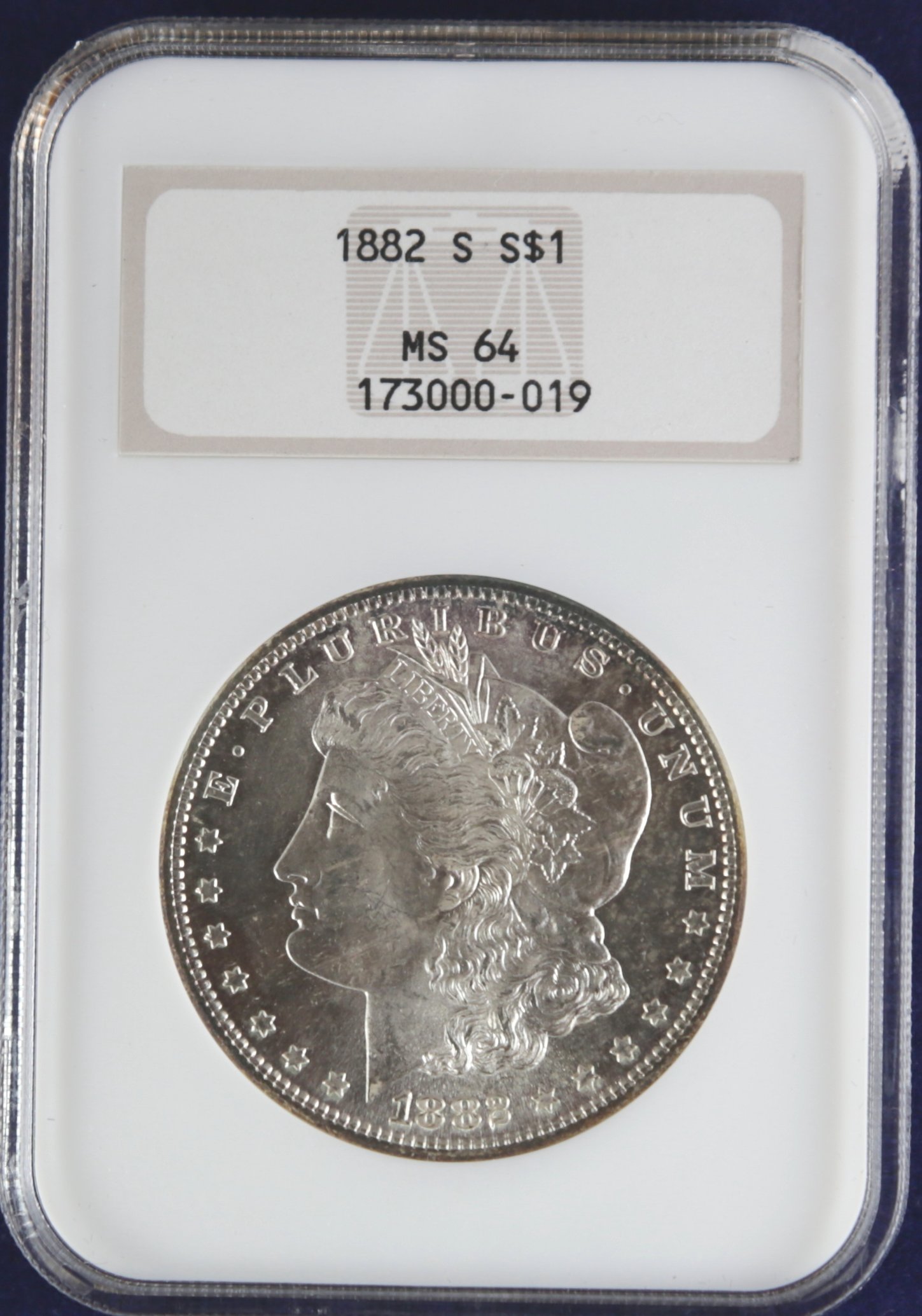

readjusted the lighting to about 10 and 2...
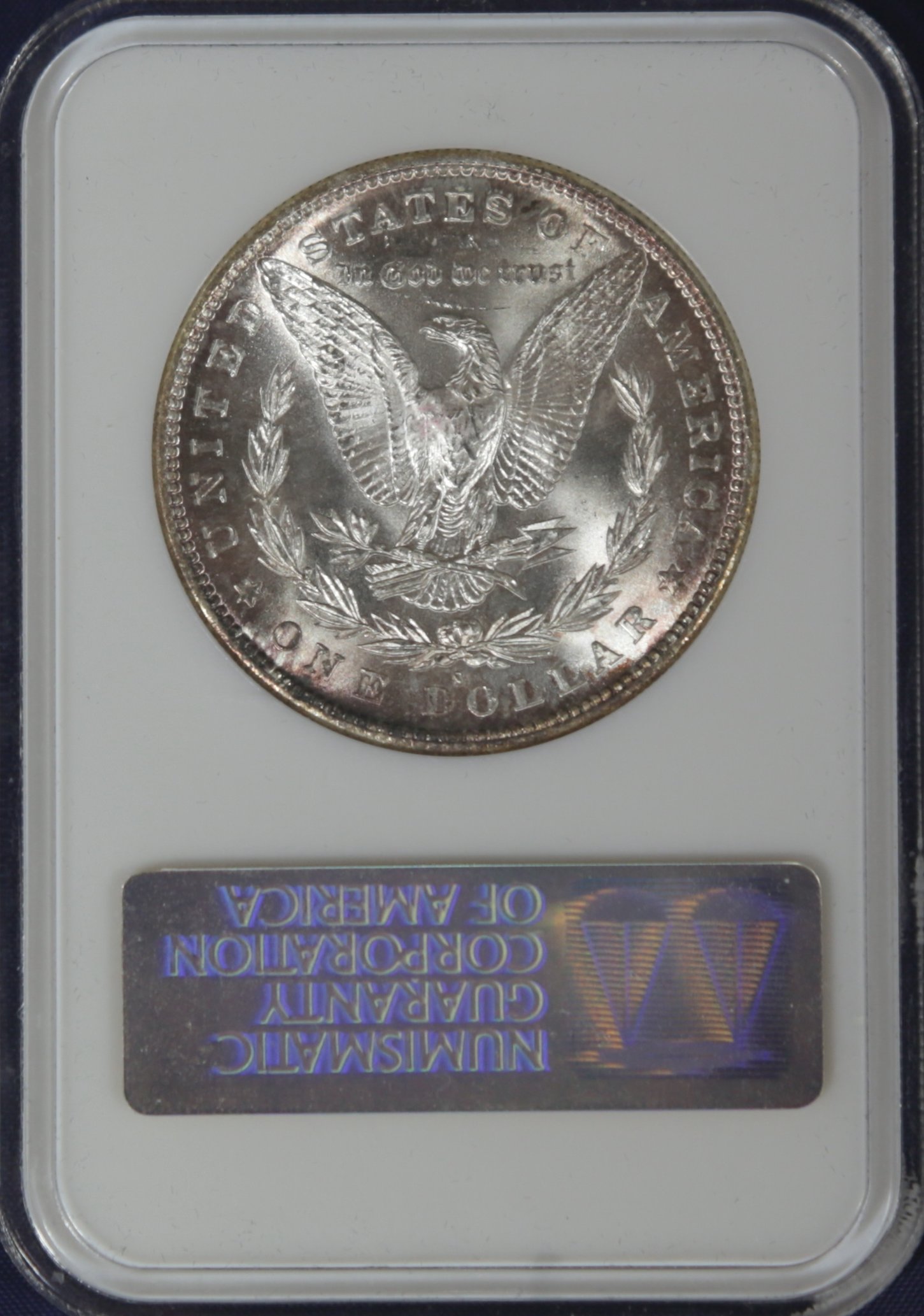
Registry: CC lowballs (boblindstrom), bobinvegas1989@yahoo.com
0
Comments
Exposure looks fine to me. Light position needs to be adjusted.
Many variables...take your time.
You'll surprise yourself at times.
White bal/exposure look good. I take photographs with tensor lights bounced off a a mirror. The mirror is at 12 relative to the coin. Some small adjustments of the tensor lights can bring out whatever I want, and using reflected light eliminates hot spots.
Your photo looks a little "flat" to me (not bad at all). I think you can get more depth to the coin by fiddling with the lighting.
http://www.shieldnickels.net
Not too shabby! Keep at it.
Click on this link to see my ebay listings.
Yah... keep moving the light.
Silver is probably the toughest to shoot
Maybe try natural light and a bit longer exposure.
The pictures look really great to me.....Cheers, RickO
Looking good
needs to be sharper. Details seem a bit fuzzy. Higher resolution?
Your image shows "549 × 783 pixels (Natural: 1731 × 2470 pixels)." Did you save image at lower resolution than what was captured by the camera?
If you understand what is coming, then you can duck. If not, then you get sucker-punched. - Martin Armstrong
Hmmmm, did not save at any resolution, higher or lower! Have the book in my lap. Put it on manual, focused as best I could and snapped away with the remote trigger. Did not set anything, no f/stop no nothing. Tried the auto focus and pics did not seem as sharp. Will continue to learn. Have nearly broken my cheap copy stand as it was designed for my little point and shoot. Have bought this: ebay.com/itm/272621797204?_trksid=p2055119.m1438.l2649&ssPageName=STRK%3AMEBIDX%3AIT and it should arrive on Tuesday or Wednesday. Dang this picture taking stuff is not cheap!
Any and all help is appreciated. This old dog will learn it for sure.
bob:)
Well, now that you have a 200 MPH copy stand...talk about bells and whistles.
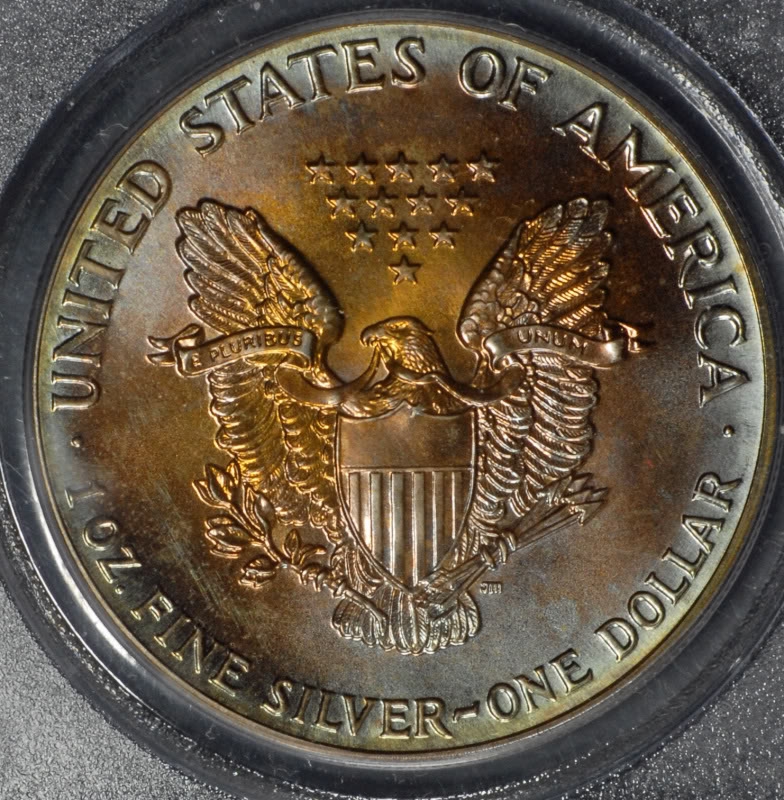
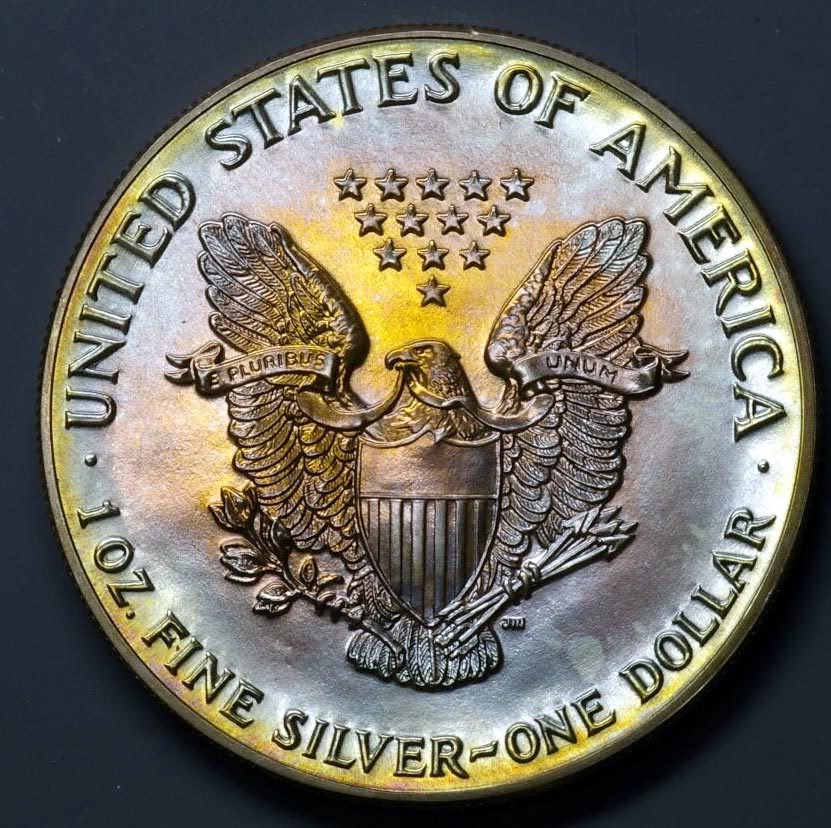
Pics are controlling variables. Takes time and experience. (but it's fun)
I show you pics of the same coin, no photoshop, just changing variables.
I can tell that your lighting did not change. What did?
White balance, f stop, shutter speed.
Okay this is f/8.0, and 1/30 shutter speed. I think this is the best yet:

@AUandAG All my images are at 6.3. I used 8 for a while but ultimately (after 1000's) transitioned to 6.3 for best balance of luster and detail and color and depth.
f/8.0, 1/50, 200 okay, I'll keep playing....good day for it.
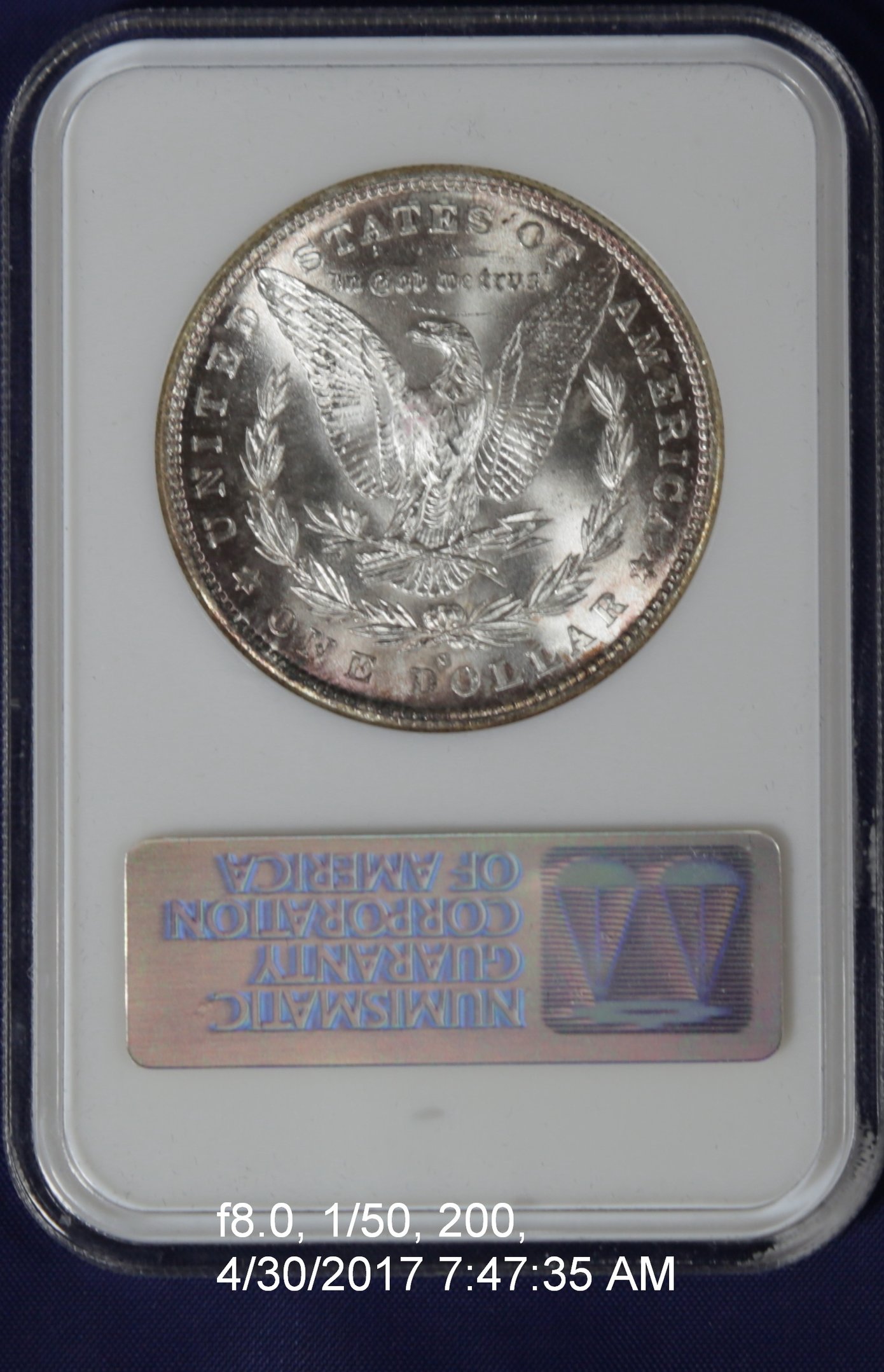
bob:)
6.3? Okay will give that a try after breakfast! Thanks for any and all imput.
bob:)
PS: My eyes do not show the coin to be in focus but through the lens and with the focus ring that is all I can get. What am I missing here?
My eyes do not show the coin to be in focus but through the lens and with the focus ring that is all I can get. What am I missing here?
Focus on the plastic surface vs to the coin surface.
@AUandAG are you tethered to a computer? That would solve A LOT of possible challenges...
I am now, but was not prior. Here are two more images tethered:
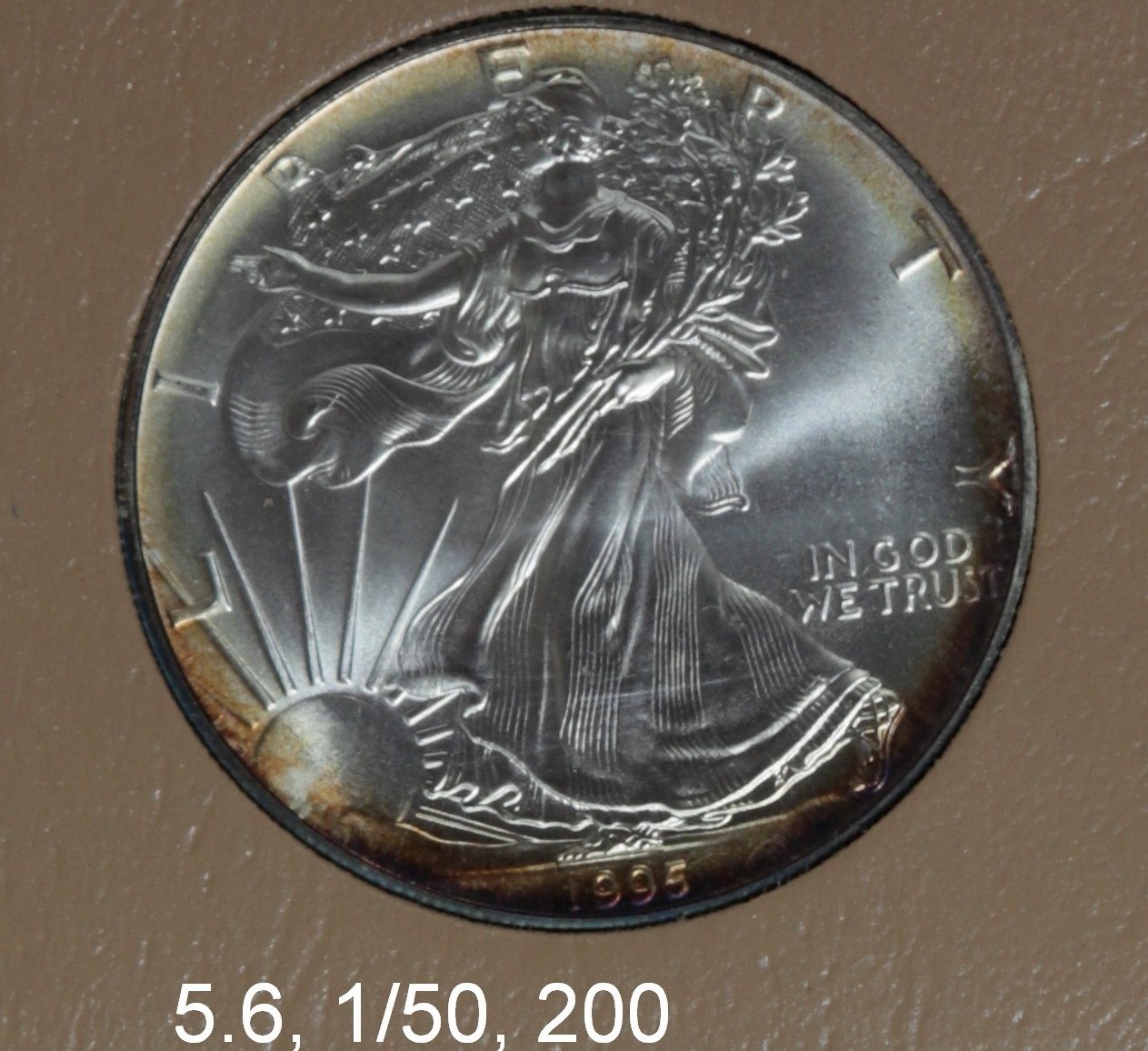
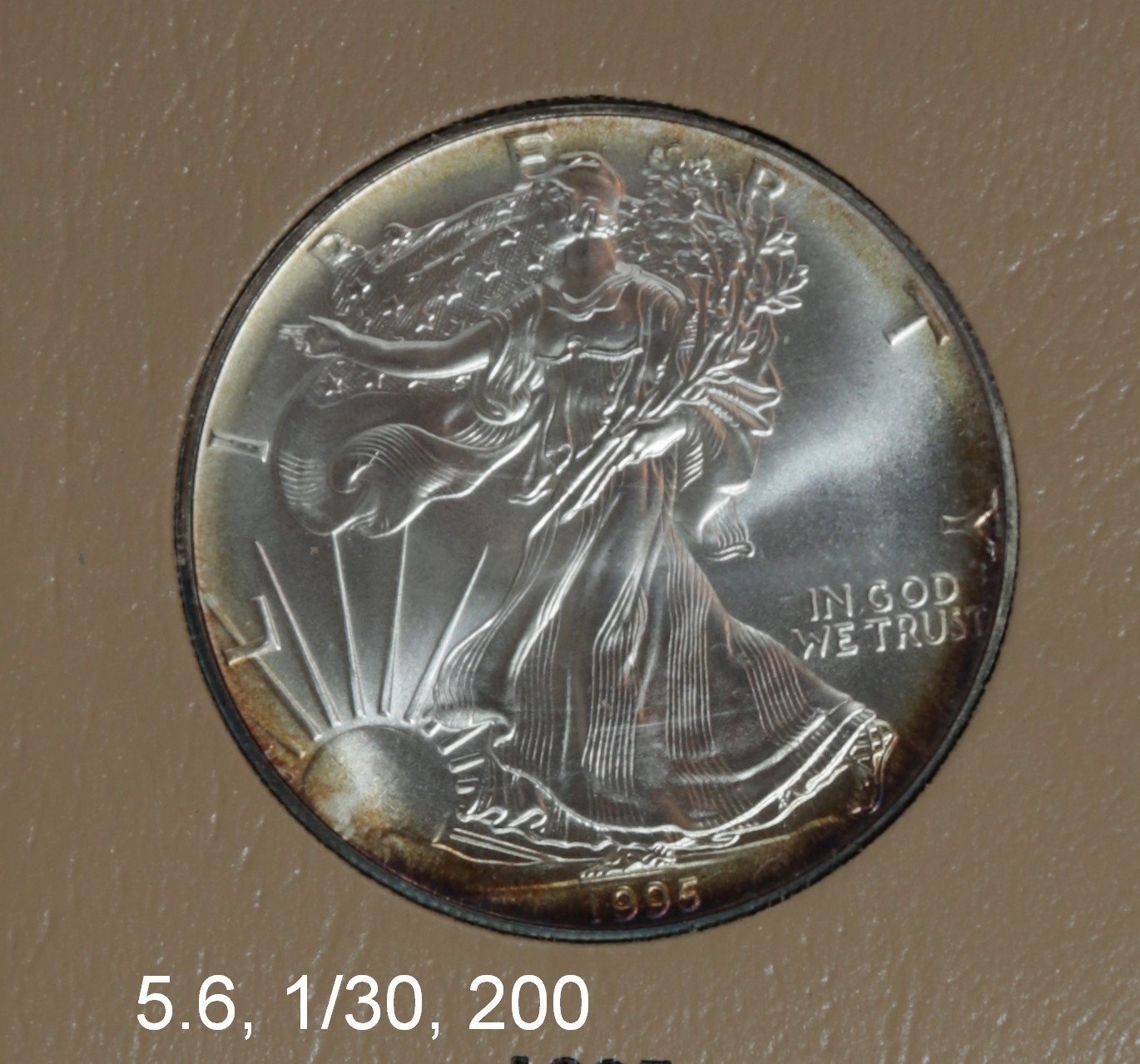
Do you have a preference?
You need more light...and to play around with positioning of the lights. I use either 2 or 3 lights (depending on the coin) with 800 (or more) lumens each. Often I use 2 lights at 1,490 lumens each, then set white balance manually.
Depth of field enabled, tethered, same lighting (can't get it farther away or higher on this stand.

bob:)
Two things determine a correct exposure. (1) Size of aperature opening measured in f stops tell the lens how much light to let pass through. The lower the f stop number the larger the aperature opening (and more light passing through the lens), resulting in less depth of field (the distance between the closest thing in focus and the furtherest thing in focus in the photograph). Each increase in the f stop number cuts in half the amount of light allowed to pass through the lens requiring twice the amount of time that the light is allowed to pass through the lens for a correct exposure. (2) Shutter speed tells the lens how long to let the light pass through. There are multiple combinations of aperature (f stop) and shutter speed that all result in a correct exposure. But for each f stop there is only one correct shutter speed to give the "perfect" exposure.
The photographer learns to use each of these for a desired affect. If shooting a landscape he will want the highest f stop possible to obtain the greatest depth of field. If trying to freeze a race car in motion he will want the fastest shutter speed possible. Most automatic cameras give him three choices. (1) Full auto where the camera chooses both the f stop and the correct, corresponding shutter speed for a correct exposure. (2) Aperature priority where the photographer chooses the f stop and the camera selects the correct, corresponding shutter speed. And (3) Shutter priority where the photographer manually chooses a shutter speed and the camera automatically selects the corresponding f stop. Experienced photographers also learn to move away from the correct exposure by under or over exposing for a desired affect.
Increasing the f stop number (you are actually decreasing the aperature opening size) increases depth of field in the photograph (the distance between the closest thing in focus and the furtherest thing in focus). Increasing the aperature opening to the next lower f stop number allows you to use twice the shutter speed. Each f stop either doubles or cuts in half the amount of light that is allowed to pass through the lens and is compensated for by increasing the amount of time that light passes through the lens (shutter speed). Depth of field is not that critical on a flat object such as a coin so do not hesitate using a lower f stop to allow for a higher shutter speed. If your camera is not giving you the detail you seek in full auto mode, I would suggest manually choosing a lower f stop and allowing the camera to automatically increase the shutter speed (aperature priority mode). How "quick" the picture is taken (shutter speed) often affects the detail in the picture. The longer shutter speed allows the aperature to remain open the more chance of loss of focus due to camera movement/vibration.
If you understand what is coming, then you can duck. If not, then you get sucker-punched. - Martin Armstrong
Great explanation....done for the day....will have to re-read this many times and practice on different coins or objects to see what is the difference. My camera stand has bitten the dust and will not risk the lens/body any further. Will wait for new stand to arrive.
Here's another question. Does increasing the focal length (distance from the object) increase the sharpness? Just curious on that issue.
Thanks DerryB and all.
bob
Increasing focal length (with a zoom lens or choosing a lens with a higher focal length) is added magnification. Any time you increase magnification you will need to increase shutter speed to compensate for "magnified movement." Good rule of thumb is a 1:1 relationship between focal length and shutter speed: If using a 100 mm lens, do not use a shutter speed less than 1/100th of a second. Best demonstrated with a loupe. The longer you look at your coin through a loupe the more it moves around.
In addition to camera movement while a lens is "open" there are moving parts in the lens that can create "movement noise" that will be reflected in the exposure if shutter speed is too slow. Rule of thumb: quicker is sharper in most cases.
If you understand what is coming, then you can duck. If not, then you get sucker-punched. - Martin Armstrong
@derryb interesting because my technique is opposite your recommendation. I typically use a shutter speed of 1/15-1/40 (depending on lighting) and f/6.3 (on a copy stand). My images are super sharp, show depth of field, luster, and color. I cannot imagine a scenario of using 1/100 shutter speed. You'd have to be using f/4.0 or smaller or have like 1,500 lumen lights hovering above the coin...
Interesting. I'll give it a try since it has been a while since I changed my settings.
I guess lighting plays a HUGE part as I'm using 2 - 2000 lumin bulbs!
bob
A correct exposure requires a balanced mathematical equation. Half the light going through the lens needs to be allowed to go through it for twice as long. The fully auto camera will determine both for you or allow you to set the aperature opening or set the shutter speed. Brightness of light entering is a big factor on correct settings. As brightness increases a higher f stop (smaller aperature opening) and/or a quicker shutter speed are required.
If you understand what is coming, then you can duck. If not, then you get sucker-punched. - Martin Armstrong
You are 2/3's of the way there. ISO or sensitivity is the 3rd corner to the exposure triangle. A coin shot at f/8 1/30th of a second will have a very different exposure at ISO 100 then it will compared to ISO 800.
If you adjust either one of these aperture, shutter speed or ISO it will impact the other two. So a proper exposure of a subject at f/8 1/100th and ISO 100 with an adjustment of the ISO to ISO 400 will require an adjustment to either the aperture or shutter speed. The correct aperture setting for that example would then be f/16 or shutter speed would increase to 1/400th. You could also adjust the aperture to f/11 and shutter to 1/200th. It's a balancing act, but it's certainly a three way balancing act.
Wow, cool information and I think I'm getting some of it absorbed! Thanks all for the help.
bob
Your lights are too low. Raise them and you'll get a more evenly lit coin and the camera's auto exposure won't be tricked as much into overexposing the areas that you are currently overexposing. Sharpness is also an issue.
Keeper of the VAM Catalog • Professional Coin Imaging • Prime Number Set • World Coins in Early America • British Trade Dollars • Variety Attribution
New copy stand on the way with a new lighting setup...I knew my lights were too low but cannot get them higher in my Photo gallery setup!
Thanks, John.
bob
In the old days each type of film had a speed (sensitivity) at which it accepts light (ISO). You had to tell the camera what the film speed was so that the built in light meter would give you a correct reading as you dialed through f stops and shutter speeds. Seasoned photographers would choose a film (and its associated speed) that worked best for their lighting conditions. In a film camera the ISO has to be set to match that of the film currently in the camera. Otherwise the exposures would be out of whack. Digital cameras don't use film but they do offer an ISO setting to give you one more way to control exposure. And since they don't use film ISO choices are plentiful. Unless you are an advanced photographer it is best to use only shutter speed and aperature setting to control your exposure when using a digital camera. Keep it a two way balancing act as much as possible - it's much easier to balance two variables than it is three.
Once you have mastered use of aperature and shutter speed then you can learn to use film speed (ISO) to increase or decrease your other two settings as needed. Choice of ISO gives you the flexibility of not having to sacrifice a desired aperature or shutter speed setting while still getting a correct exposure. A higher ISO (a higher "film speed") allows for an increase if f stop number (smaller aperature opening - greater depth of field) or an increase in shutter speed (to protect image from subject or camera movement).
If you understand what is coming, then you can duck. If not, then you get sucker-punched. - Martin Armstrong
If your copy stand is like a good tripod and you can use a sync cord to shoot the pic, you can use a slower shutter speed. But remember, a slower shutter speed means more light is allowed into the pic, so you'd have to adjust either the F Stop or ISO to compensate for this.
Cameras also have setting for how much you want your pics to 'pop.' Vivid is the strongest of the lot. You can also adjust this setting by using + or 1 numbers. You can spend as much time on this as you wish. You will reach a point where you will find something that works for you. Suggest you stop there. You can make a career out of this.
"Seu cabra da peste,
"Sou Mangueira......."